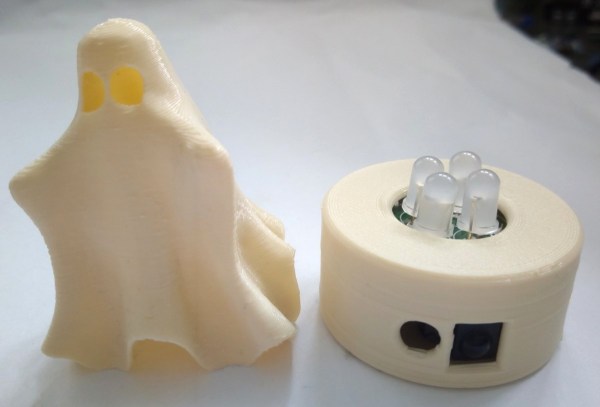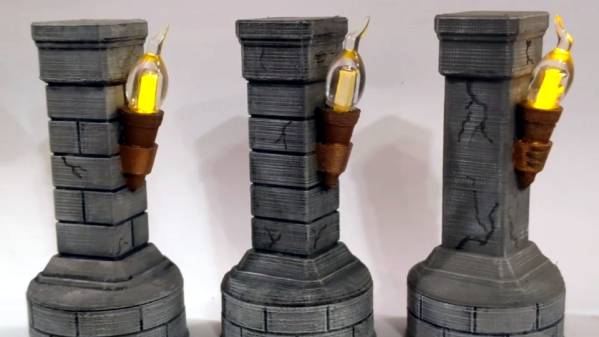Halloween is coming fast and what better way to add to your Halloween ornamentation than [Wagiminator]’s cute NeoCandle tea light simulator.
[Wagiminator] has modified a 3D printed ghost along with extending [Mark Sherman]’s light simulation code to create a cute light that’s perfect for the holiday season. The NeoCandle uses an ATtiny85 chip to power four WS2812 NeoPixel jelly bean LEDs. The device has an infrared (IR) receiver to be able to control it from a remote that speaks the NEC protocol. There is a light sensor that allows the unit to dim when it detects ambient light and the whole unit is powered off of a micro-USB connection.
The ATtiny85 have limited program flash and [Wagiminator] packs in a lot of functionality in such a small package, squeezing in a bit-banging NeoPixel driver in only 18 bytes of flash that can push out a transfer rate 762 kpbs to update the LEDs. The pseudo-random number uses a Galois linear feedback shift register and comes in at 86 bytes of flash, with the IR receiver implementation code being the largest using 234 bytes of flash. The ATtiny85 itself has 8 KB of flash memory so maybe it’s possible to push [Waginminator]’s code to even more restrictive Atmel devices in the ATtiny family.
With microcontrollers and LEDs becoming so cheap and ubiquitous, making realistic flames with them is becoming accessible, as we’ve seen with previous projects on electronic candles.












